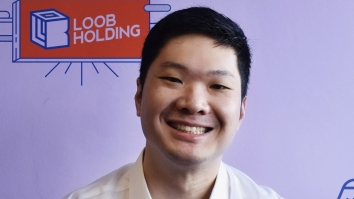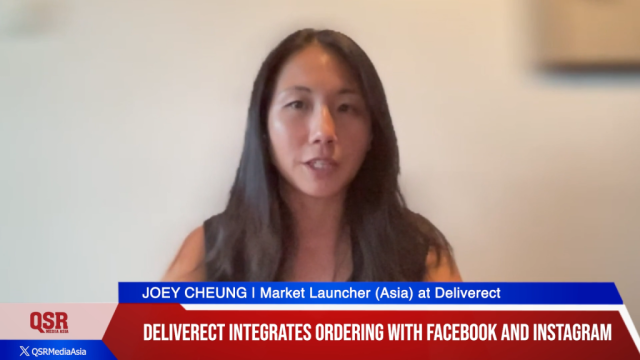Taking risks in innovation is essential for QSR brands globally
How Can QSRs and Restaurants Use the Global Pre-Ordering Trend to Their Advantage?
I learned a great deal about ordering behavior during the 4 years I spent designing, developing and launching Virgin America’s award winning Inflight Entertainment System, Red and its’ air-to-ground WiFi strategy. At the time of development, the iPhone was also under development. In fact, had the airline launched on-time its embedded feature set would have beaten the iPhone to market. In the end, the airline and food and drink ordering launched with great fanfare just two months after the iPhone. Naturally, people like to browse menus and be able to place orders without the time crunch of an aisle cart!
An early lesson learned was that consumers wanted choice and customisation. This is something that Coca Cola has learned remarkably well with its’ Freestyle innovations, allowing for multiple beverages and flavourings to be mixed inside of the machine. We found that drinks required options like With Ice or Without Ice. What’s so interesting isn’t understanding the fundamental consumer desires alone, but it is architecting a seamless, straightforward and consistent process.
There are dozens, sometimes hundreds, of QSR options or substitutes (C-Stores, food courts, etc.) in one zip code, zone, district or subdivision, let alone a city or metro area.
Each QSR option is competing for the same customers. That is why it is so important for restaurants to stay on top of new technology that will make restaurants not only stand out from their competitors but also make it more convenient for their customer and their employees.
Today there are many new technologies, especially pre-ordering apps and kiosks being adopted in hospitality and retail; these make restaurants run more quickly and more efficiently, which improves the experience for customers and employees.
Why Do QSRs Need to Take Risk in This Area?
Frankly speaking, disruption is needed to stay afloat, let alone alive in this competitive industry. Asia’s growth trajectory in QSR innovation has caused meals eaten at home to now be enjoyed outside, something that two decades ago would be tremendously rare. A restaurant’s offering is delicious and the brand may be savoury, but that’s not enough to complete a robust customer journey experience!
The saying that goes, “If it isn’t broke, don’t fix it” is not entirely true for many QSRs. While it’s good to keep some practices if they are working for a business, when it comes to technology and innovation, it is better to move with the times and always have the best for customers. Standing ahead will not only make a business stand out from the crowd, but it will serve to lead new share (like Uber, Lift, Grab, and Didi Chuxi / Didi Dache) and forge a position as a trendsetter and not a laggard.
Pre-Order Apps
Starbucks, as many know is the largest coffee brand in the United States and a dominant force globally, is usually very progressive when it comes to new features and technologies. Also, we all are aware that in their Starbucks app from the early days, they have been on a path allowing customers to load prepaid balances, then pre-order drinks and always engaging with more functionality. In the pre-order scenario, when the customer arrives, the drink is already waiting for them and the customer has paid via the app. No waiting in line. This process is fast becoming the new standard, and QSRs also need to make sure that they follow the current trends to keep their customers and attract new ones.
Many existing apps and mobile sites actually pull down QSR business, indicating that one may not be competing and is a potential laggard! Apps, mobile sites, widgets and mobile objects attract current and potential customers restaurants and QSRs that implement these technologies, but only if they possess utility and pizzaz. Those that give your customer valuable information, make finding menus and deals easier, and can distinguish themselves with utility such as via pre-order options, deal-casting, demand generation techniques, and more.
One may be thinking, most people go to Starbucks or Kopitiam and immediately leave again under a To-Go or Takeaway scenario, so you can understand why a pre-order app works for them. But why would it work for a restaurant or QSR with a drive-thru in the US or enough employees behind cash registers in Asia, especially if the proprietor usually wants customers to stick around. The owner might only see the drive-thru as potentially getting more complicated due to its’ current just-in-time cooking techniques.
The methodology of remote ordering does work, not just in QSRs and restaurants, but also in other areas. People don’t like to wait. That is fact. If a QSR were to allow a customer to pre-order their meal, that means their food will be waiting for them by the time they arrive and can win over all stakeholders, be them customers, team members, franchisees and suppliers by demonstrating knowledge of when to begin prepping, cooking and bagging using inbound geolocation and traffic considerations. A QSR’s pre-order to eat-in traffic will also likely increase, which may blend an Uber like share creation model in certain outlets, making the overall market size larger.
Kiosks at Upon Entry & at Tables
Another element that is getting more popular in restaurant circles is the ordering/paying kiosk at the table. Across Asia, there are numerous scenarios where technology enhances experience dramatically, but the industry is fragmented and the offering generally remains inconsistent. Think of this typical scenario. A QSR customer arrives and immediately waits in line. They don’t know what to order, so other customers in line may be delayed. By the time the customer is ready to order, team members might be busy with other customers, other back counter chores, and it may be some time before they can return to that customer struggling to read the menu board and make their decision. This is frustrating and may cause the loss of customers just as gas stations lose customers when lines at the pump are long. This may occur no matter how well-trained a team may be to juggle, smile and say I will be right with you.
But if there is an ordering kiosk at the table or a few large kiosks as customers enter restaurants, these guests may order whenever they are ready and on their terms. The team members will receive the notification by relay of the order to the kitchen and normal queuing behavior will occur. This does not make a restaurant or QSR team redundant, but it does give them the time they need to focus on each customer experience without feeling rushed, providing better focused questions and higher throughput.
A customer will have also paid their bill at the kiosk, which gives a team one less task to manage and makes things more convenient for the customer. Additionally, it provides the conduit for loyalty/CRM integration and subtle upsells. In this vein, it can provide a restaurant/QSRs corporate with new business models and ways to help franchisees; even deriving a small percentage of customer’s transaction processing fees to eat-in as well as offering options to order more for take-away / to go consumption later; corporate support will essentially be growing revenue to help all outlets from the same customer base without taxing its team members or its drive-thrus.
Franchisees may need to see this demonstrated to understand it, yet it is no different than a customer ordering something to-go or for take-away at the end of their meal at a full service restaurant.
The more convenient your restaurant is for your customer, the more likely they are to choose you over your competitor. The ROI on consolidating transactions from digital platforms to one merchant processor and reaping the benefits as an HQ initiative is enormous and may be an option for some brands, especially those in Asia where transactions dynamics can vary by market.
In a nutshell, this is why it is so important to stay on top of current trends in restaurant technology and not defer core innovation with redressing stale app or web properties.
Mobile, kiosk and, eventually, Connected Car and Connected Person strategies improve the service quality of a brand and QSR units and are certain to develop and bring more loyal customers to an industry that has years of expansion under its belt. In turn, innovation and iteration will bring more profits and improve brand positioning, for customers and team members alike.































